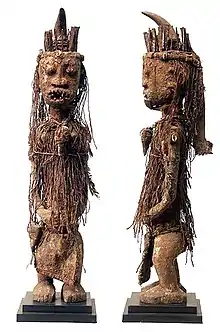
When looking up information about Tshiluba, there isn't much that teaches you how to speak the language. As much information as there is on the background of the language, there isn't much on the grammar or the vocabulary. The purpose of this book is to teach you just that.
It is highly encouraged that others help contribute to this book and add information to the appropriate lessons.
Introduction
Tshiluba is a Bantu language spoken by about six million people in the Democratic Republic of the Congo. It is primarily spoken in Western and Eastern Kasai[1]. Much like English, it is subject-verb-object (SVO). Tshiluba is a tonal language, meaning that a change in tone when speaking the language can have an effect on the meaning conveyed. Two tones are commonly used: high and low. High tones are usually marked by an accent over the vowel, while low tones are left unmarked[2].
Contents
Level One
- Getting to Know You
- Letters, Numbers, & Colors
- Greetings & Introductions
- Describing People
- Around the House
- Furniture
- Household Chores
- Family
Level Two
- Around Town
- Places
- Jobs & Professions
- Activities
- Back to School
- School Supplies
- School Subjects
- Telling Time
Level Three
- How's the Weather?
- Dates
- Common Weather
- What to Wear
- Shopping
- Likes & Dislikes
- Types of Stores
- Things to Buy
Other
- Appendices
- Glossary
- Index
References
- ↑ Ager, Simon. "Tshiluba Language and Alphabet". Omniglot. Kualo. http://www.omniglot.com/writing/tshiluba.php. Retrieved 2017-02-02.
- ↑ Rosenbaum, Vanessa; Billings, Kelli; Gohn, Janessa; Holcomb, Libby; Lahey, Jessica et al. (2014-04-21). Tshiluba Language Structures (Report). ScholarWorks - Boise State University Scholarship and Research. http://scholarworks.boisestate.edu/cgi/viewcontent.cgi?article=1049&context=as_14. Retrieved 2017-02-02.